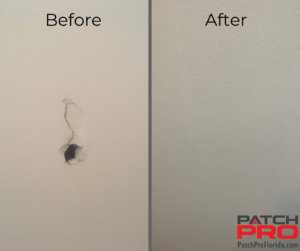Regular home maintenance prevents minor issues from escalating into expensive emergencies. Spending a little time each month can save hundreds, or even thousands, of dollars down the line. In fact, homeowners who invest just one hour per month in basic upkeep reduce repair bills by up to 30% annually. Here are practical DIY hacks that cut costs, protect your property, and help you know when it’s time to call a professional.
1. Keep Gutters Clean and Functional
Leaves and debris clogging gutters lead to water damage, roof rot, and foundation cracks. Clogged gutters can cost $1,000–$2,500 in roof repairs alone.
- Hack: Use a gutter scoop or a high-pressure nozzle on your garden hose to clear downspouts.
- Frequency: Clean gutters at least twice a year—more often if you have many trees.
- Watch For: Overflowing water during rainstorms. Persistent pooling signals a backup.
- Pro Tip: If your ladder work feels unsafe or gutters are hard to reach, hire a professional.
2. Inspect and Seal Windows and Doors
Drafty windows raise energy bills by 10–25%. Simple weatherstripping can reduce heating and cooling costs by up to $200 per year.
- Hack: Apply adhesive foam weatherstripping around window frames and door jambs.
- Tools: A tape measure, scissors, and a clean rag to prep surfaces.
- Look For: Cracks, gaps, and peeling seals. Even small holes let air escape.
- When to Call a Pro: If windows are warped, glass is cracked, or your home still drafts after sealing.
3. Maintain Your HVAC System
Ignoring HVAC maintenance reduces efficiency by 5% per year and may shorten system lifespan. Replacing a system averages $5,000.
- Hack: Change filters every 1–3 months. A clean filter improves airflow and cuts energy usage.
- Action: Vacuum vents and wipe down accessible coils to prevent dust buildup.
- Signal You Need Help: Strange noises, uneven heating, and rising energy bills.
- Professional Intervention: Schedule an annual tune-up with a licensed technician to inspect refrigerant levels and safety controls.
4. Test Smoke and Carbon Monoxide Alarms
Working detectors save lives and can reduce home insurance premiums by up to 10%.
- Hack: Press the “test” button monthly to verify alarms work.
- Reminder: Replace batteries every six months—tie this to daylight saving changes.
- Red Flag: Chirping sounds or a failing test indicate alarm replacement is necessary.
5. Clean and Reseal Grout Lines
Dirty or cracked grout leads to water seepage and tile damage. Repairing tile floors can cost $1,000 or more.
- Hack: Scrub grout with a 1:1 mix of baking soda and water, then spray with vinegar.
- Tools: A stiff brush, grout cleaner, and a grout-sealing product.
- Key Step: Once dry, apply a grout sealer to prevent future stains.
- Professional Call-Out: If tiles lift or grout gaps are wide, consult a tile specialist.
6. Lubricate Door Hinges and Locks
Squeaky hinges and sticky locks not only annoy but signal wear that leads to hardware replacement.
- Hack: Spray silicone or graphite lubricant on hinges and locks every six months.
- Benefit: Smooth operation extends the life of your hardware and prevents replacement costs.
- Problem Sign: Excessive rust or broken parts demands a locksmith’s expertise.
7. Maintain Water Heater and Plumbing
Sediment buildup in your water heater reduces efficiency and can cause leaks. Replacing a water heater costs $800–$1,500.
- Hack: Drain your water heater tank annually to remove sediment.
- Steps: Turn off power, connect a hose to the drain valve, and flush until clear water runs.
- Watch For: Rusty water color or hissing noises—these signal corrosion or pressure issues.
- When to Call a Plumber: Persistent leaks, pilot light issues, or temperature control failures.
8. Inspect Roof and Attic
Small roof leaks lead to mold, insulation damage, and structural rot. A major roof replacement can average $7,000.
- Hack: From inside the attic, look for water stains, mold spots, or daylight through roof boards.
- Seasonal Check: Inspect after heavy storms or once per year.
- Immediate Action: Replace missing shingles with a nail and wood-roofing adhesive.
- Safety Concern: If roof pitch is steep or damage extensive, always hire a professional roofer.
9. Flush Your Garbage Disposal
A smelly or slow disposal often leads homeowners to replace the entire unit—costing $200–$400.
- Hack: Monthly, grind ice cubes and citrus peels to clean blades and freshen odors.
- Maintenance: Run cold water while the disposal operates to solidify grease and push it out.
- Issue Indicator: Loud grinding or non-spin means a jam—an electrician or plumber can inspect safely.
10. Clean Dryer Vents
Lint buildup in dryer vents increases fire risk and raises drying times, hiking energy bills up to 30%.
- Hack: Every three months, detach the vent hose and use a lint brush to clean inside.
- Warning Signs: Clothes take longer to dry or the dryer housing feels hotter than usual.
- Professional Service: Annual vent cleaning by a duct specialist ensures safety and efficiency.
Knowing When It’s Time to Call a Professional
DIY maintenance can handle most routine tasks. Complex or dangerous jobs—like major electrical work, structural repairs, or gas-line adjustments—require licensed experts. Attempting these yourself voids warranties and risks injury. If a repair stretches beyond basic cleaning, sealing, or simple part replacement, contact a certified professional immediately.
Your Seasonal Maintenance Roadmap
Regular DIY maintenance cuts repair costs, preserves home value, and prevents emergencies. Spending a few hours each season on these hacks can save thousands of dollars over a decade. Keep an eye on changing conditions, track the age of your systems, and never hesitate to call in a pro when issues exceed your comfort or skill level. A timely expert intervention can protect your family and your investment long term.



You must be logged in to post a comment.